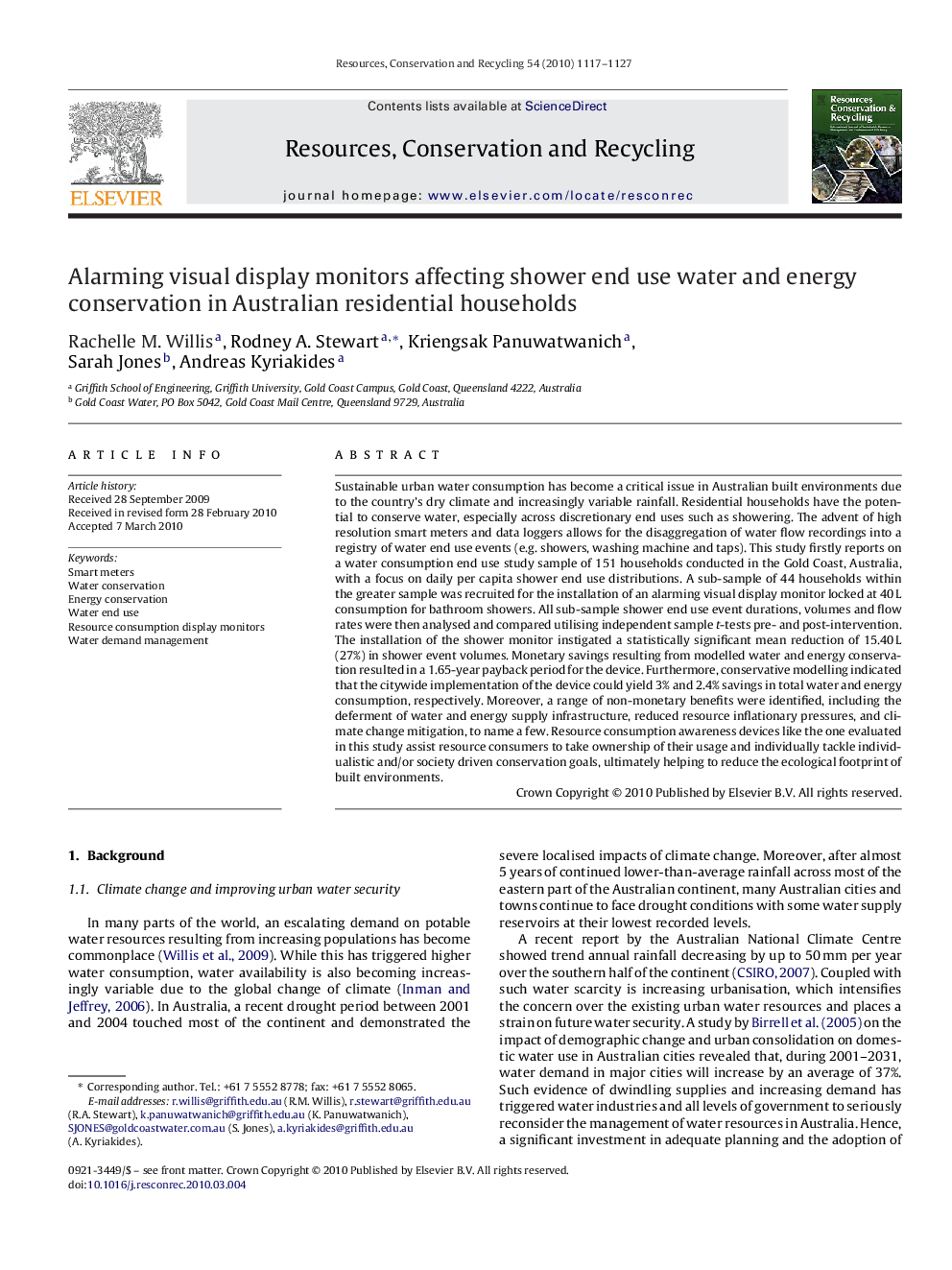| کد مقاله | کد نشریه | سال انتشار | مقاله انگلیسی | نسخه تمام متن |
|---|---|---|---|---|
| 1063798 | 948257 | 2010 | 11 صفحه PDF | دانلود رایگان |

Sustainable urban water consumption has become a critical issue in Australian built environments due to the country's dry climate and increasingly variable rainfall. Residential households have the potential to conserve water, especially across discretionary end uses such as showering. The advent of high resolution smart meters and data loggers allows for the disaggregation of water flow recordings into a registry of water end use events (e.g. showers, washing machine and taps). This study firstly reports on a water consumption end use study sample of 151 households conducted in the Gold Coast, Australia, with a focus on daily per capita shower end use distributions. A sub-sample of 44 households within the greater sample was recruited for the installation of an alarming visual display monitor locked at 40 L consumption for bathroom showers. All sub-sample shower end use event durations, volumes and flow rates were then analysed and compared utilising independent sample t-tests pre- and post-intervention. The installation of the shower monitor instigated a statistically significant mean reduction of 15.40 L (27%) in shower event volumes. Monetary savings resulting from modelled water and energy conservation resulted in a 1.65-year payback period for the device. Furthermore, conservative modelling indicated that the citywide implementation of the device could yield 3% and 2.4% savings in total water and energy consumption, respectively. Moreover, a range of non-monetary benefits were identified, including the deferment of water and energy supply infrastructure, reduced resource inflationary pressures, and climate change mitigation, to name a few. Resource consumption awareness devices like the one evaluated in this study assist resource consumers to take ownership of their usage and individually tackle individualistic and/or society driven conservation goals, ultimately helping to reduce the ecological footprint of built environments.
Journal: Resources, Conservation and Recycling - Volume 54, Issue 12, October 2010, Pages 1117–1127